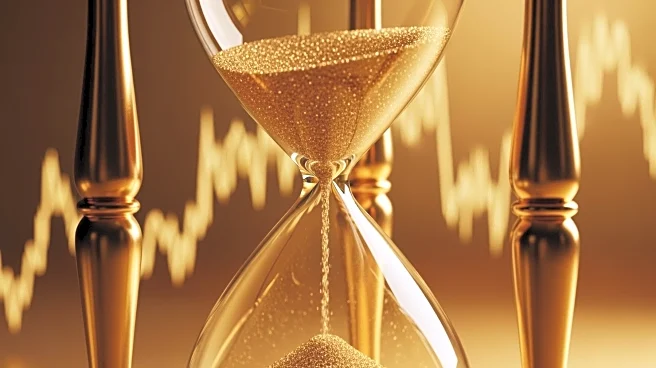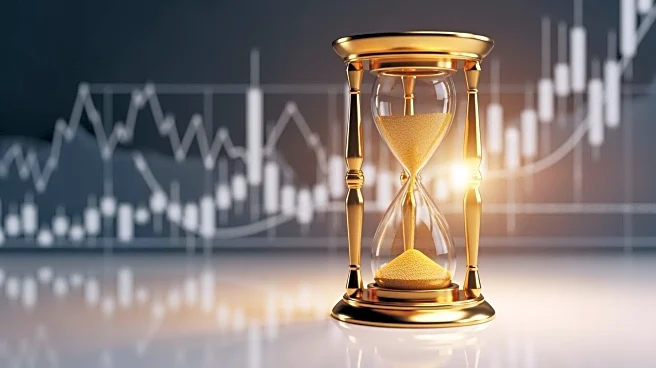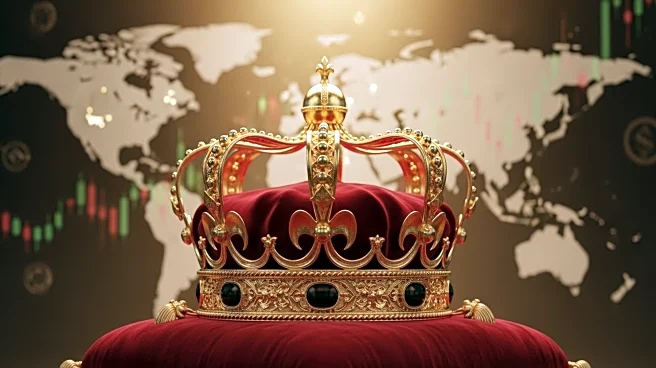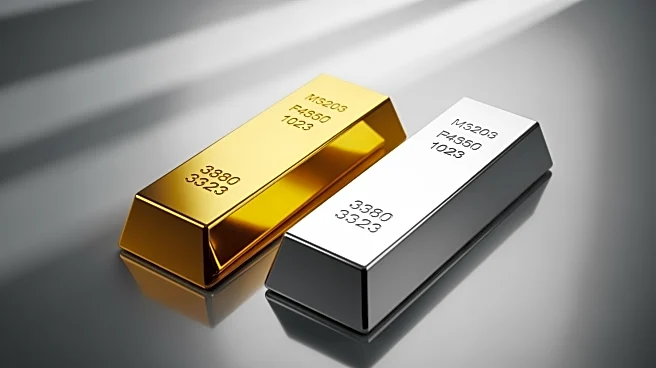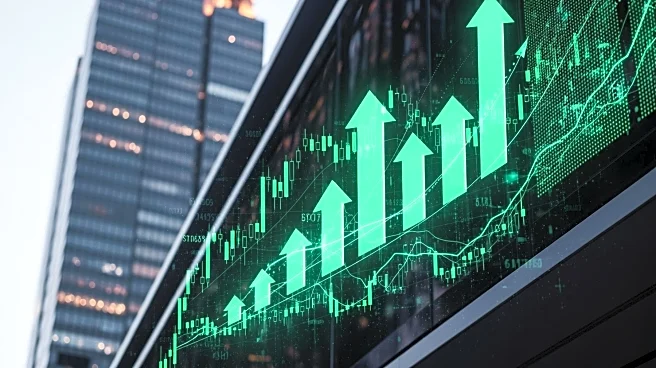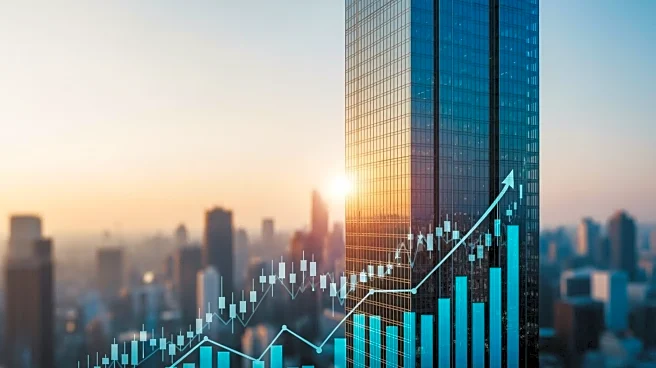What's Happening?
Gold prices have been reaching new all-time highs, with forecasts suggesting they could climb to $5,000-$6,000 per ounce in the coming year. This surge is driven by factors such as economic uncertainty,
stock market volatility, and geopolitical tensions. Goldman Sachs recently raised its end-of-year forecast for gold to $4,900 per ounce, while HSBC and Bank of America predict even higher prices in 2026. The demand for gold is bolstered by its role as a hedge against risk and its low correlation with equities and bonds. Additionally, central banks and retail investors are increasing their gold purchases, further driving up demand.
Why It's Important?
The rising gold prices reflect broader economic concerns, including fears of a U.S. government shutdown and global trade tensions. As a traditional safe haven asset, gold's increasing value indicates a lack of confidence in other investment options, such as government bonds and the U.S. dollar. This trend could lead investors to allocate more of their portfolios to gold, impacting financial markets and investment strategies. However, the rapid price increase also poses risks, as any resolution of geopolitical tensions or economic stabilization could lead to a decrease in demand and a potential price correction.
What's Next?
Investors and financial institutions will closely monitor geopolitical developments and economic indicators to assess the future trajectory of gold prices. The Federal Reserve's interest rate decisions and inflation trends will also play a crucial role in shaping gold's appeal as an investment. As central banks continue to diversify their reserves with gold, the metal's strategic importance in global finance is likely to grow. However, any significant changes in market conditions could prompt investors to reevaluate their positions, potentially leading to shifts in gold demand and pricing.
